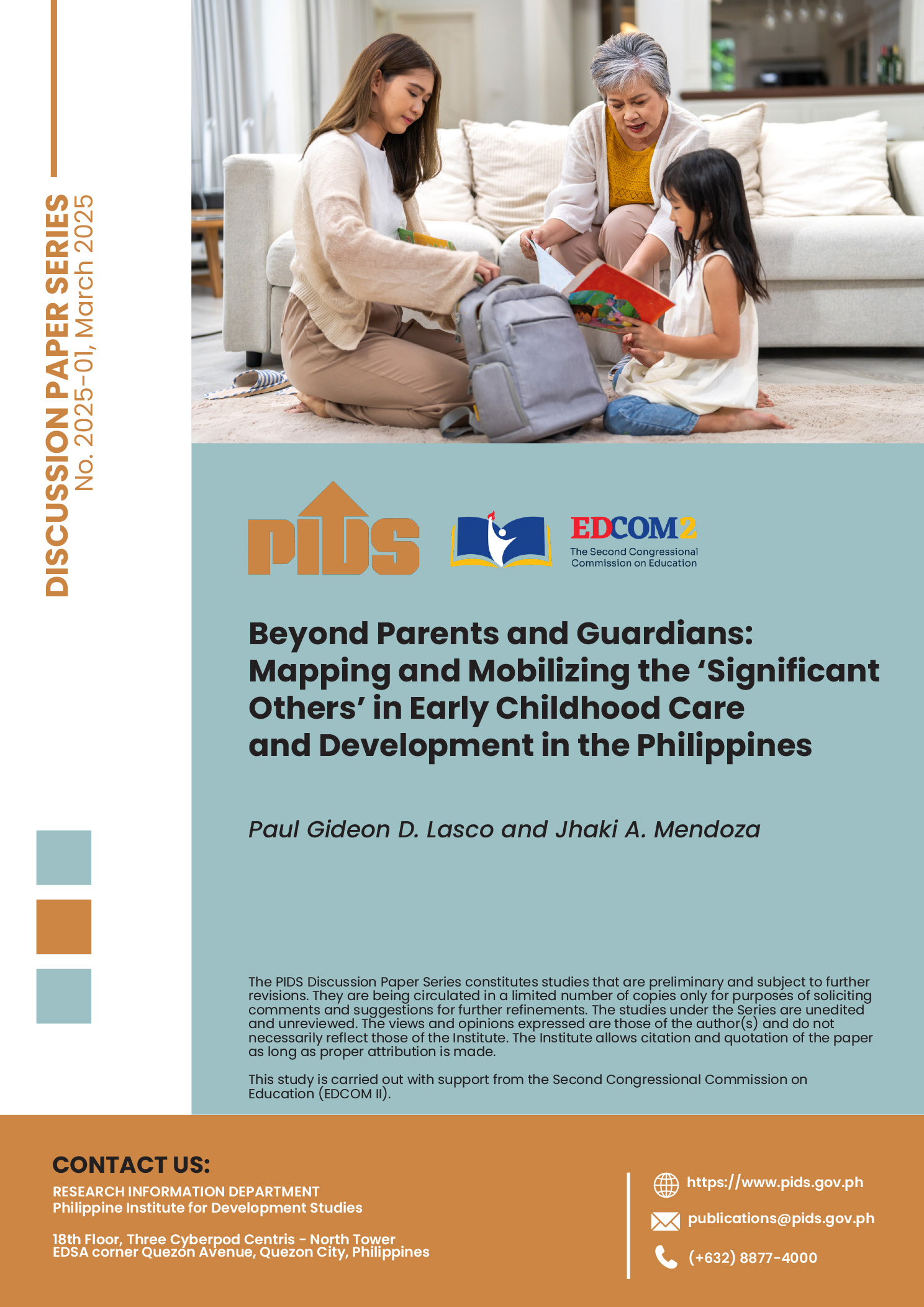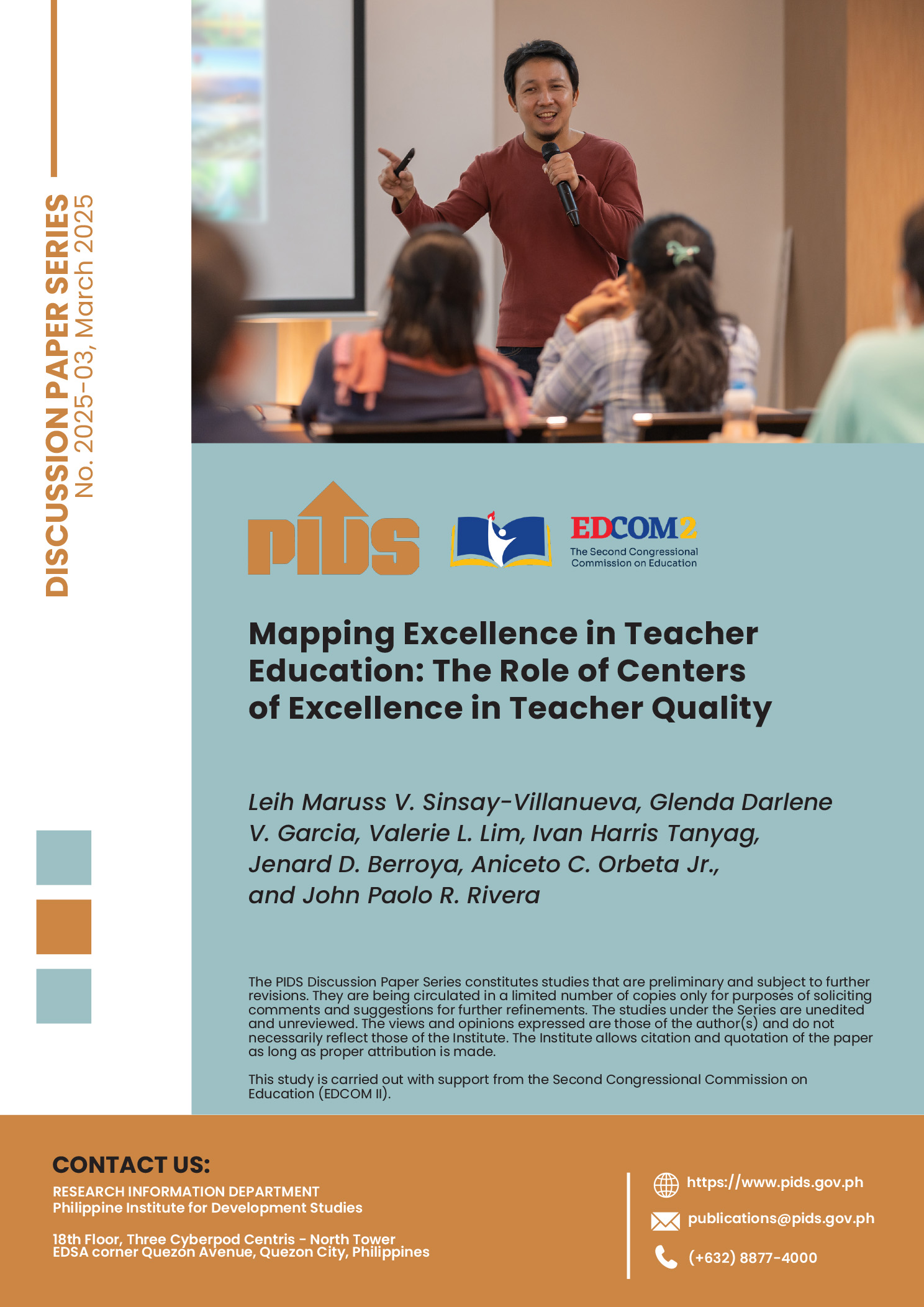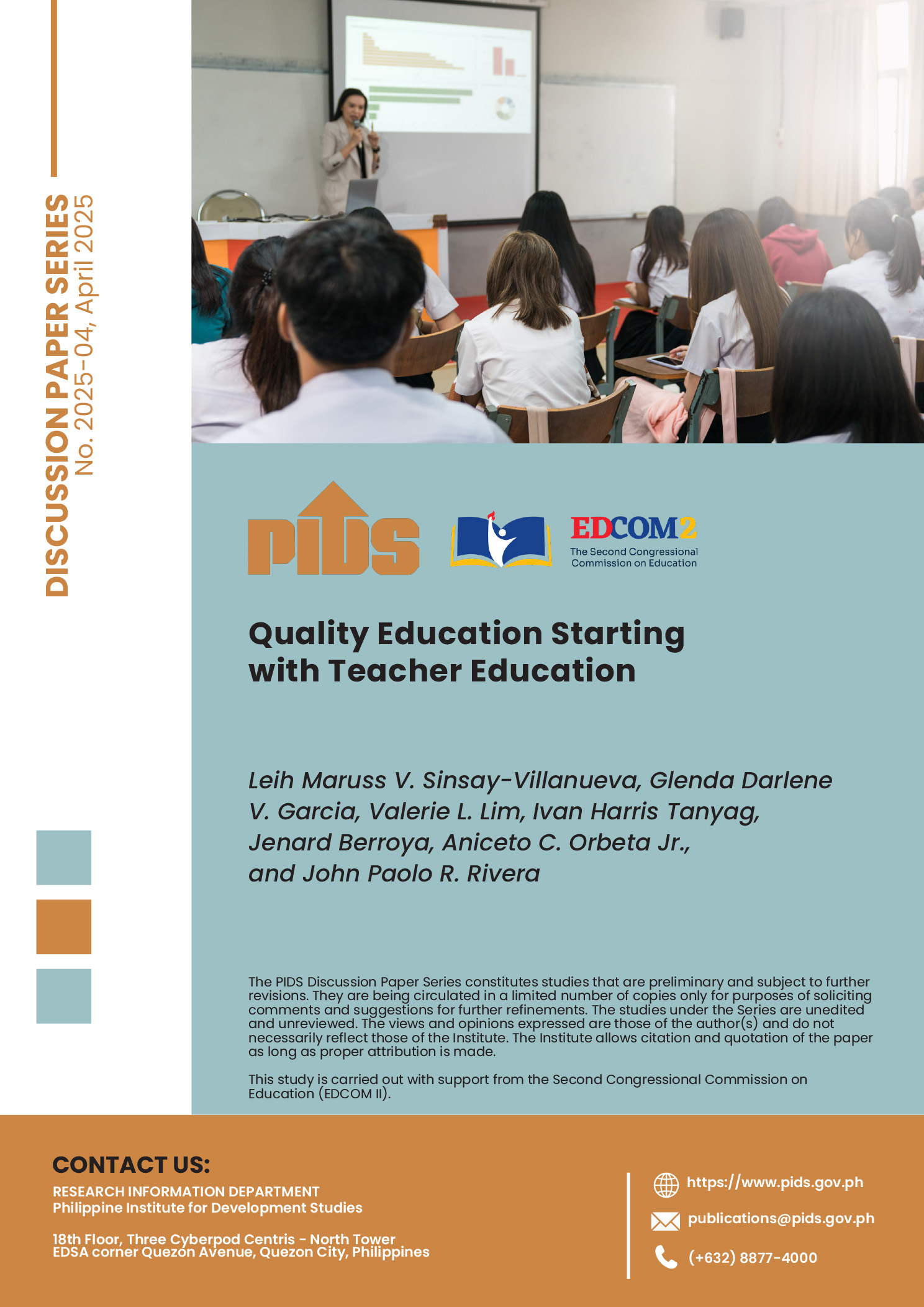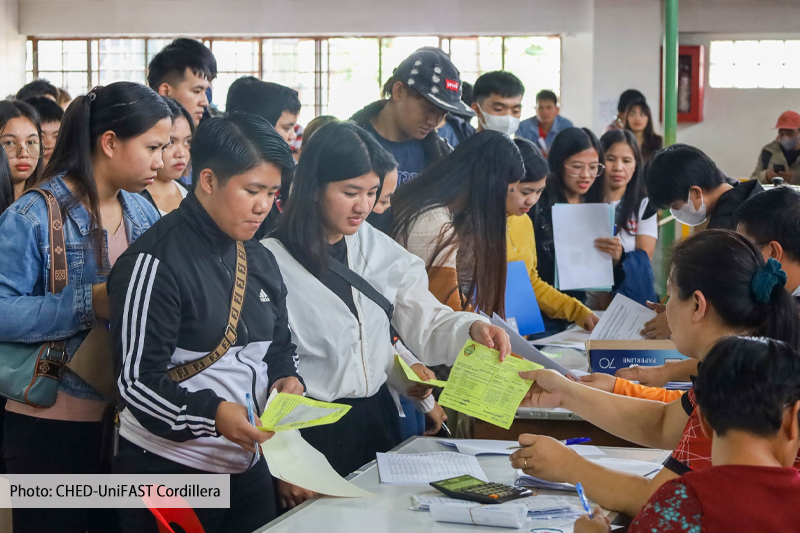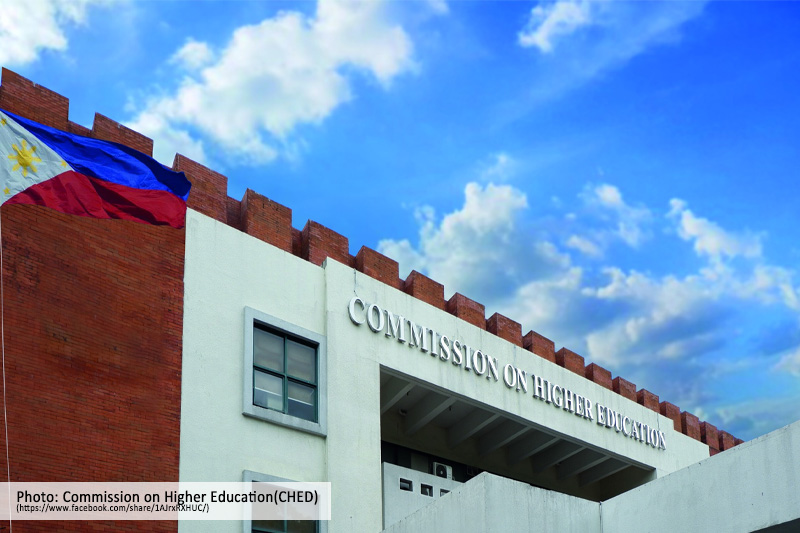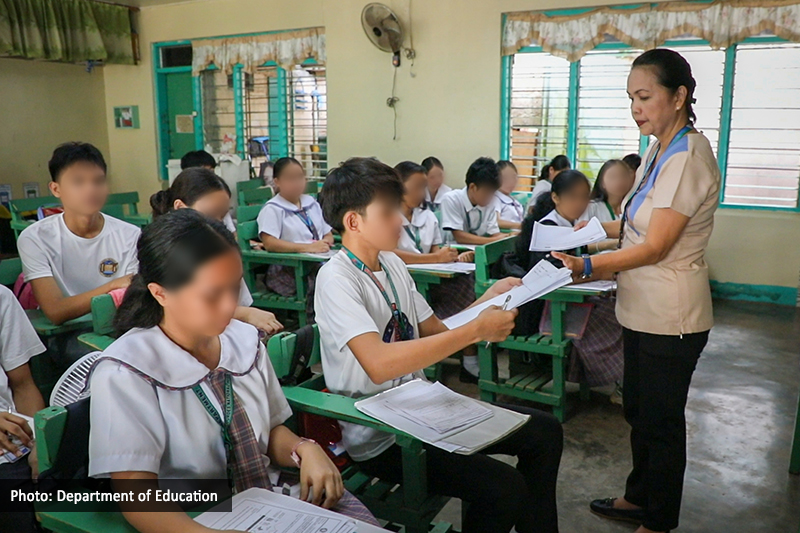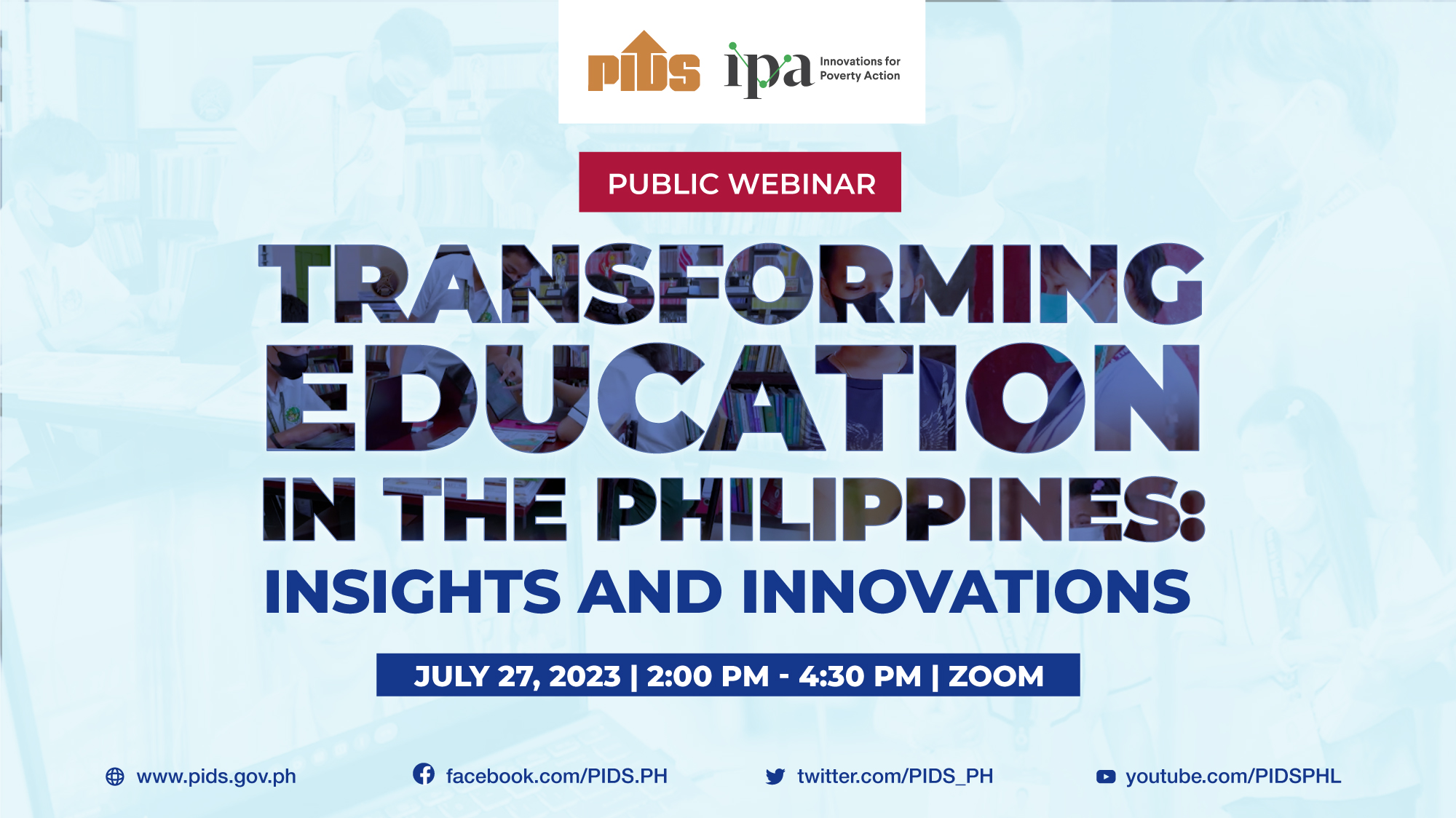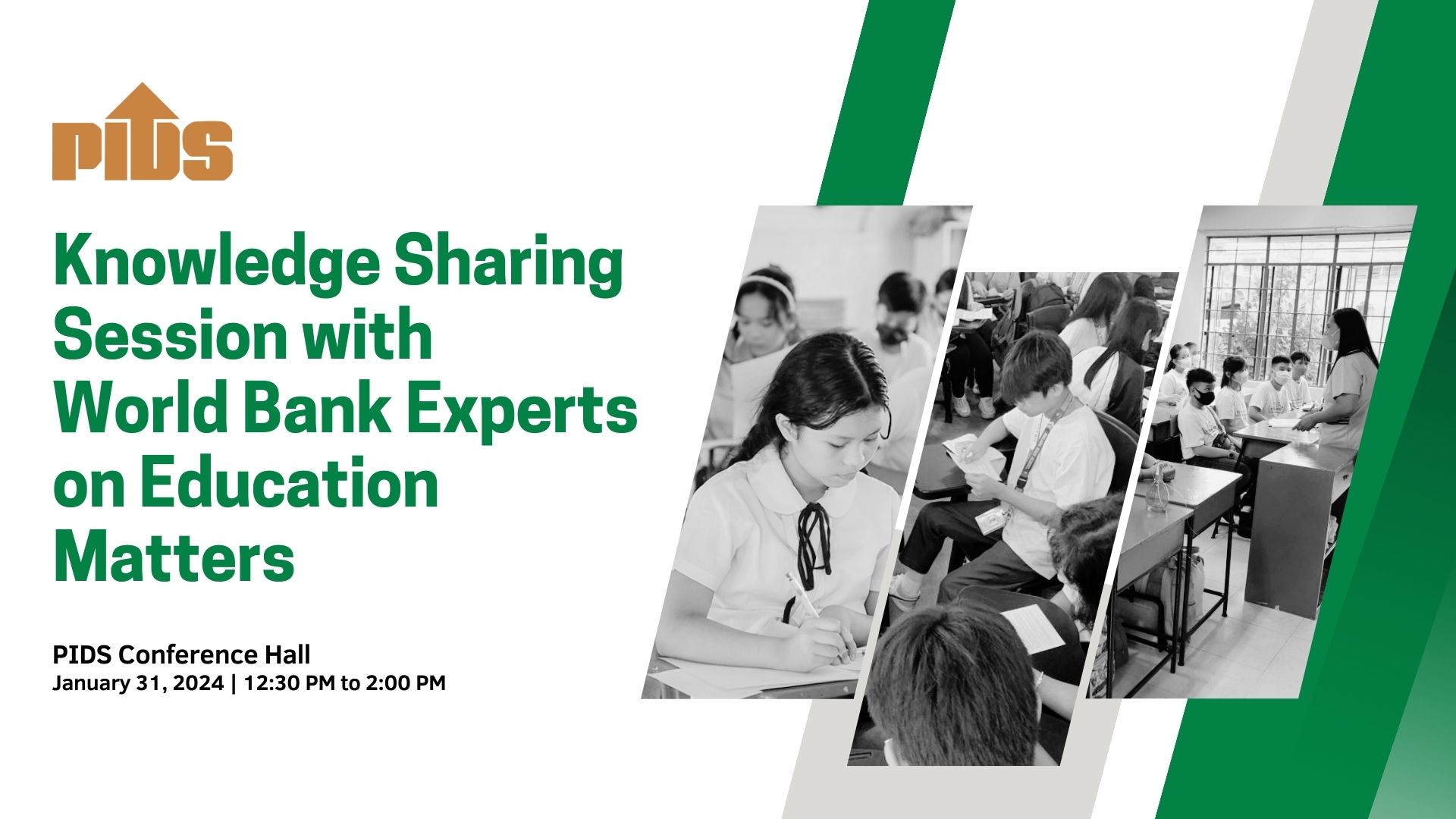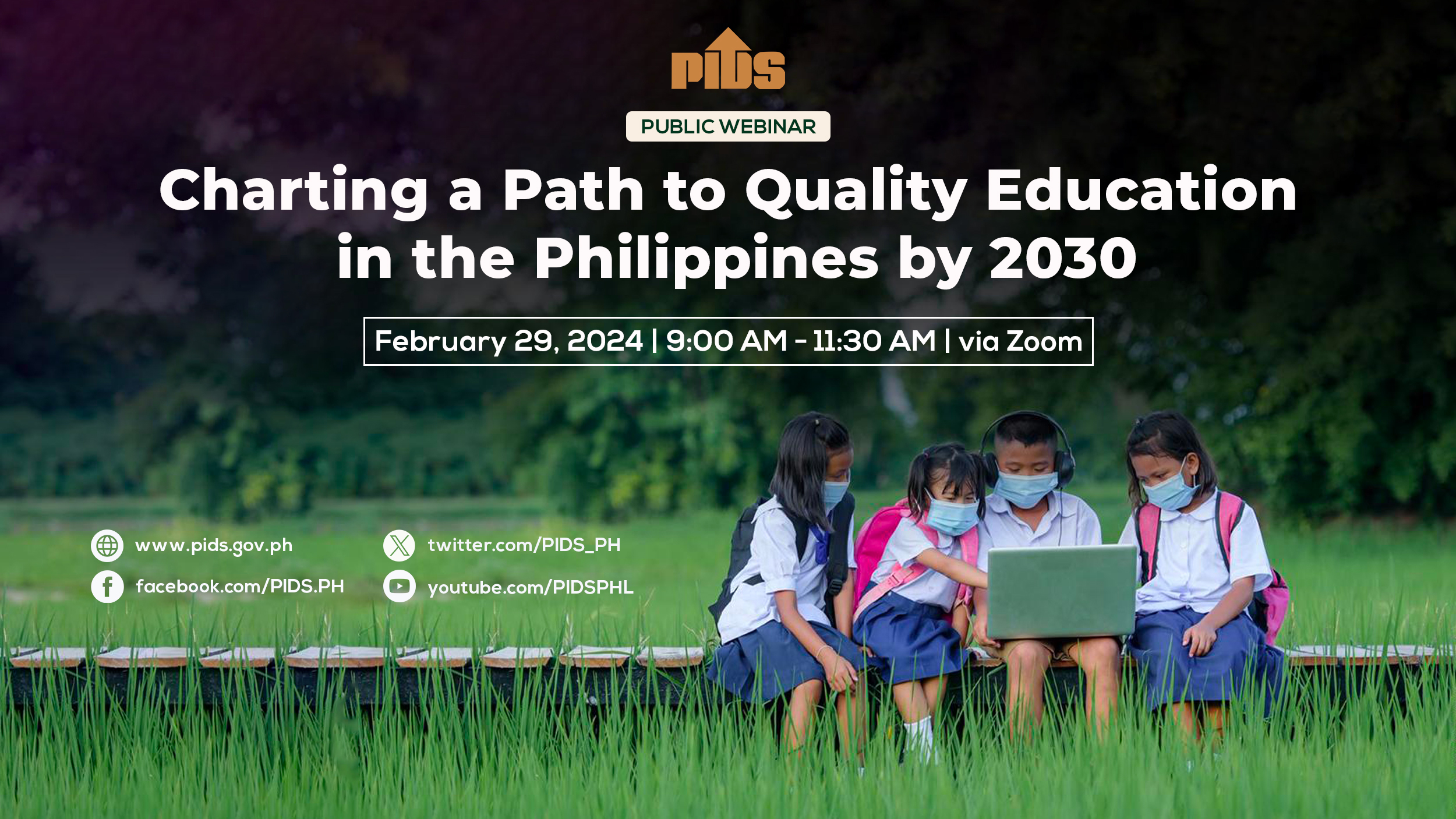MANILA, Philippines — The government needs to increase its investment in education and training to improve students’ learning outcomes, according to the Philippine Institute for Development Studies (PIDS).
“The Philippines must raise its education and training spending to a much higher level to catch up with the average student learning achievements of the country’s aspirational peers,” PIDS president Aniceto Orbeta Jr., visiting research fellow Vicente Paqueo, and consultant Mark Vincent Aranas said in the state think tank’s policy paper.
Aside from increased spending, the authors said there is a need for more effective and efficient use of available resources.
These reforms are being pushed as the Philippines is lagging compared to its neighbors on education spending, and underperforming in terms of learning competencies.
Citing a World Bank study, the authors said 90 percent of 10-year-old students in the country cannot read and understand a simple text.
The authors also cited the 2018 Program for International Student Assessment results, which showed only one in five Filipino students achieve at least a minimum proficiency level in reading and mathematics.
“There is no denying that students fail to acquire the competencies they are supposed to learn in school,” the authors said.
They attributed the disappointing results on learning competencies to government’s education policy focused on the rapid expansion of tuition-free public schools, lack of incentives to motivate teachers to provide better education, and the failure to effectively mobilize and efficiently use available resources to ensure children meet the prescribed minimum proficiency standards before moving up to the next grade or education level.
“There must be a shift in focus to manage the government’s limited resources and the public’s need for better quality education and training,” the authors said.
Among the immediately doable measures the government can implement is to strengthen and expand the Department of Education’s voucher programs and other types of public-private partnerships.
The authors said the government can also adopt a participatory process for the allocation of education and training subsidies for public and private education, develop a program to motivate teachers and schools to increase the number of students that meet the minimum learning proficiency standards, as well as set up an education and training innovation fund.
Other measures recommended by the authors include revising the Pantawid Pamilyang Pilipino Program, and strengthening efforts to ramp up enterprise-based training.
“The learning crisis should be a wake-up call for policymakers to abandon the business-as-usual approach and ensure that those who need assistance should have them,” the authors said.

